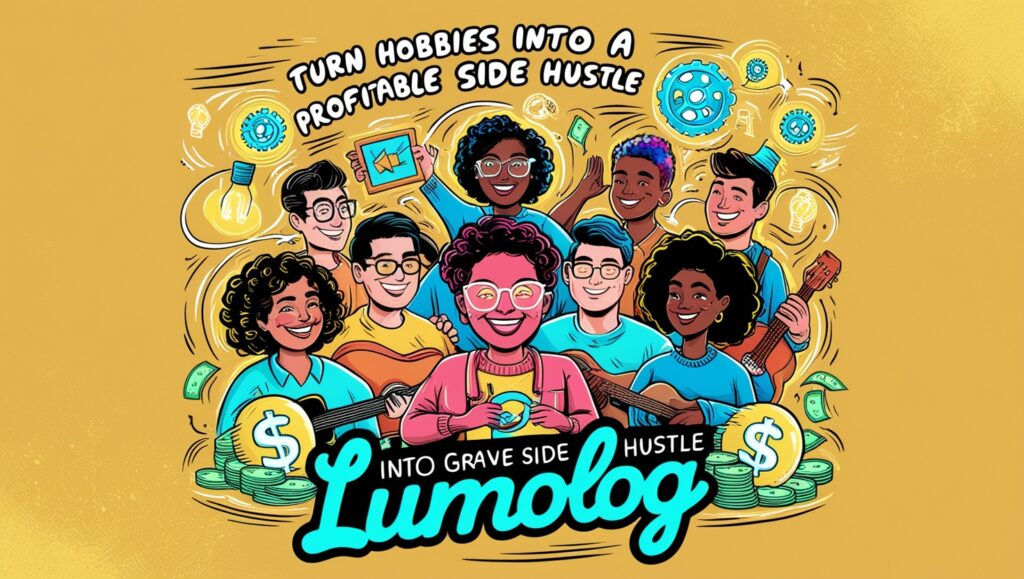In an era where the lines between passion and profession are increasingly blurred, transforming hobbies into profitable side hustles is appealing and attainable. With the rise of digital platforms and an ever-expanding market for unique products and services,turn hobbies into a profitable side hustle lumolog. This article will explore various ways to monetise your hobbies, focusing on creating a sustainable side hustle that can complement your lifestyle and finances.
Understanding the Concept of a Side Hustle
Before diving into the specifics, it’s crucial to understand what a side hustle entails.It can take many forms, from freelance work to selling handmade products, and can be as flexible as your schedule allows. The key is to find something you enjoy and can commit to, even if it’s just a few hours a week.
Why Turn Hobbies into a Side Hustle?
Financial Security:Additional income can provide a safety net, especially in uncertain economic times.
Creative Outlet:Hobbies are often enjoyable and fulfilling; monetising them can add another layer of satisfaction.
Skill Development:Running a side hustle can help you learn new skills, enhancing personal and professional growth.
Community Building:Sharing your passion can connect you with like-minded individuals, fostering a sense of community.
Identifying Your Hobbies with Profit Potential
The first step in turn hobbies into a profitable side hustle lumolog. Not all hobbies can easily be monetised, but many have hidden potential. Here’s how to identify which of your hobbies might be worth pursuing:
Market Research: Finding Your Niche
Once you’ve identified your hobbies, the next step is to research the market to determine if there is a demand for what you’re considering offering. Platforms like Google Trends and social media can provide insights into what people are interested in.

For example, if you love knitting, investigate online marketplaces like Etsy or Ravelry to see how others monetise similar crafts. Are there specific patterns or items that are particularly popular? Understanding the landscape will help you position your side hustle effectively.
Crafting Your Business Plan
Creating a business plan is essential, even for a small side hustle. This plan doesn’t need to be overly formal but should outline your goals, target audience, and strategies for reaching them.
Defining Your Target Audience
Knowing your audience is crucial for any business. Who are you trying to reach? For instance, if you’re interested in photography, your target audience might include aspiring photographers, companies needing marketing images, or individuals looking for family portraits. Consider their age, interests, and where they spend their time online.
Setting Goals and Objectives
Establish clear, achievable goals for your side hustle. Consider both short-term and long-term objectives. Short-term goals include setting up a website or selling your first product, while long-term goals involve expanding your offerings or reaching a specific income level.
Building Your Brand
Once you have a clear plan, it’s time to build your brand. Your brand represents who you are and what your side hustle stands for.
Choosing a Name and Logo
Select a name that reflects your hobby and resonates with your target audience. For example, your brand name might incorporate artistic elements or techniques if you’re an artist. Once you’ve settled on a name, consider creating a logo that visually represents your brand.
Establishing an Online Presence
Create a professional website showcasing your products or services, and consider setting up social media profiles to engage with potential customers. Platforms like Instagram, Pinterest, and Facebook can be particularly effective for visually-driven hobbies.
Marketing Your Side Hustle
Marketing is vital to driving awareness and attracting customers to your side hustle. Utilise both online and offline strategies to promote your venture.
Social Media Marketing
Share your journey, showcase your work, and engage with your audience. Use relevant hashtags to increase visibility, and consider collaborating with influencers in your niche to reach a broader audience.

Content Marketing
Create valuable content that showcases your expertise. If you’re a blogger, consider writing articles with tips or tutorials related to your hobby. This positions you as an authority and attracts potential customers searching for related information.
Networking and Collaborations
Attend local events, join online communities, or participate in forums related to your hobby. Collaborating with others can enhance your visibility and credibility.
Managing Your Side Hustle
Once your side hustle is up and running, it’s essential to manage it effectively to ensure its sustainability and growth.
Time Management
Balancing a side hustle with a full-time job can be challenging. Create a schedule that allows you to dedicate focused time to your venture without overwhelming yourself. Prioritise tasks that align with your goals and delegate where possible.
Financial Management
Keep track of your income and expenses to understand the financial health of your side hustle. Consider using accounting software or apps to help manage your finances. Additionally, research the potential tax implications of your side hustle to avoid surprises come tax season.
Expanding Your Product or Service Offerings
Once you’ve established a customer base, consider expanding your offerings. If you initially started selling handmade jewellery, you could branch out into custom pieces or even offer jewellery-making classes.
Automating Processes
Look for ways to automate repetitive tasks. Tools for scheduling social media posts, managing emails, or processing orders can save you time and help your side hustle run more smoothly.

Seeking Feedback and Adapting
Continuously seek feedback from your customers to understand their needs and preferences. This can help you adapt your offerings and marketing strategies, ensuring you remain relevant in the marketplace.
Conclusion
turn hobbies into a profitable side hustle lumolog. By carefully assessing your skills, researching your market, and crafting a solid business plan, you can create a venture that reflects your interests and meets the needs of your audience. As you embark on this exciting path, remember to stay adaptable and open to learning. Your side hustle can flourish with dedication and creativity, transforming your favourite pastime into a rewarding venture.
FAQs
What types of hobbies are best for side hustles?
Hobbies that lend themselves to tangible products or services work well, such as crafting, cooking, photography, writing, or fitness. The key is to assess market demand for your hobby.
How much time should I dedicate to my side hustle?
The time commitment varies depending on your goals and schedule. Start small—perhaps a few hours a week—and adjust as you see what works for you and your audience.
Do I have to enroll my side gig as a business?
Depending on your location and the scale of your side hustle, you may need to register it as a business and obtain the necessary permits. Check local regulations to ensure compliance.
How would I value my items or administrations?
Consider your costs, the value you provide, and what competitors charge. Conducting market research can help you set competitive yet profitable prices.
Can I turn multiple hobbies into side hustles?
Yes! Many people successfully manage multiple side hustles. To avoid burnout, ensure you have the time and resources to devote to each one.
With careful planning and passion, your hobby can evolve into a thriving side hustle that enhances your life and income.


